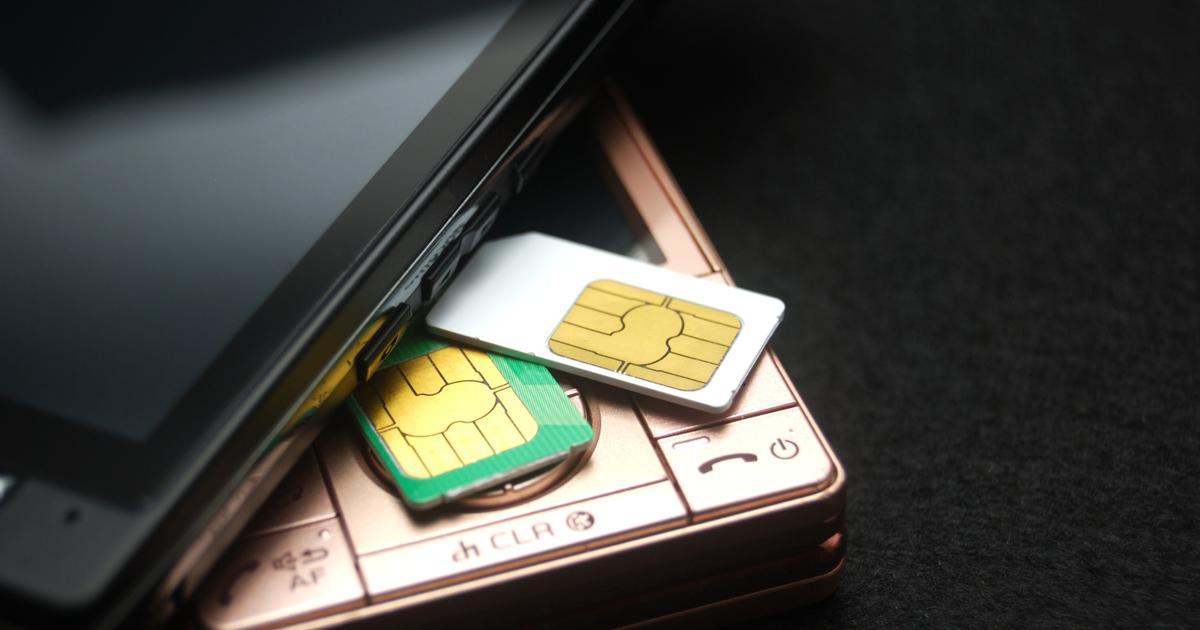Will the SIM card soon have its place with the Nokia 3310 in mobile telephony museums?
Born in the 70s, then the size of a bank card, and miniaturized over the decades to reach ten millimeters in its "nano" version, the famous object is threatened by the advent of the eSIM, or SIM embarked.
More and more smartphone manufacturers are offering it directly to the device.
For their users, there is no need for the (tedious) process of ordering, receiving, then inserting this card into the phone, after having looked for a fairly thin tool or an extractor to open the SIM drawer.
The simple scan of a QR Code, or the connection from an application, makes it possible to identify the mobile to the network and to benefit from the services of operators.
In France alone, nearly 80 smartphone models now offer this technology.
Manufacturers are pushing in this direction.
Soldered to the phone, the eSIM can be further miniaturized or even completely dematerialized in the long term.
Saving precious space to make room for other components or even the size of the battery, on products where every gram counts.
So as not to rush consumers and operators, most manufacturers have until now doubled the system with a port for the classic SIM card.
But that might not last.
Apple, the first manufacturer to have developed smartphones with eSIM, would consider for its iPhone 15 to remove the possibility of using the SIM for the French market.
After'
A small revolution, subject of recurring debates even heated discussions between the operators and the American manufacturer a few years ago.
“
During the first launches, there was a general outcry among the operators.
The SIM card is a physical element of the relationship between a customer and an operator.
Without it, they fear being disintermediated,”
explains Jacques Assaraf, head of the telecoms industry at Capgemini
.
“The idea that it's Apple or Samsung showing you the packages to which you are entitled is a little terrorizing.
Who tells us that these two, or others, will not take a liking to the activity of operator?
“
, even indicates a leader on the operator side.
Read alsoRonan Planchon: “When the children of the bourgeois throw away their smartphones”
No more roaming charges
Another problem for traditional operators: with this technology, changing plans becomes very simple.
Data that mechanically increases the attrition rate (customers who leave each year), a closely monitored metric.
Finally, the use of the eSIM is popular with professional travelers and globetrotters: no more unsecured Wi-Fi connections in hotels, the search for a local SIM card and above all, roaming charges.
With a QR Code, it is possible to activate an operator service at a competitive cost and in a few minutes.
However, roaming costs constitute an activity that is certainly small in the total income of operators, but with a particularly large margin.
The market obviously hasn't changed yet.
But its growth is inevitable
.
"The number of eSIM-compatible smartphones should increase from 1 to 3.5 billion between 2023 and 2027, which will naturally drive market growth
," said Jacques Bonifay, CEO and founder of the French SME Transatel (subsidiary of Japanese NTT ), which has a turnover of 50 million.
According to a study that the group relays, the value of the market could reach 17 billion dollars in 2030, against 7 billion today.
Virtual operator (which rents the mobile network) and pioneer in the eSIM market with its Ubigi offer, the latter has seen its sales of eSIM packages jump by 216% in 2022. “Since the end of Covid, activity has
exploded
“Judges this boss who believes that in the long term, the SIM card is “
doomed
”.
Of course, traditional operators have understood the danger.
After having slowed it down for a long time, the four major French groups all offer eSIM courses, even if they do not communicate on it, or else in a very discreet way.
Read alsoWho is Jean-François Fallacher, the new CEO of Orange France?
Savings for operators
Surveyed, the Orange group confides, for example, wanting to
"leave the choice of technology
"
that best suits its users, and claims a 50% growth in sales of eSIM plans over one year, even if it is only a beginning.
For Jacques Assaraf however,
“The operator could also see savings in the eSIM.
Between manufacturing, sending and returning SIM cards, there are several processes that represent a significant cost.
»
Mobile telephony is only the tip of the iceberg.
The eSIM is also already very present in connected watches, or laptops.
Above all, it will jump in the coming years in the automotive sector, explains Jacques Bonifay.
Cars, which are becoming veritable computers on wheels, increasingly require this type of connection.
More generally in the professional sphere, the market for connected objects (or IoT) should carry the eSIM, given the explosion of digitization in businesses and industry.














